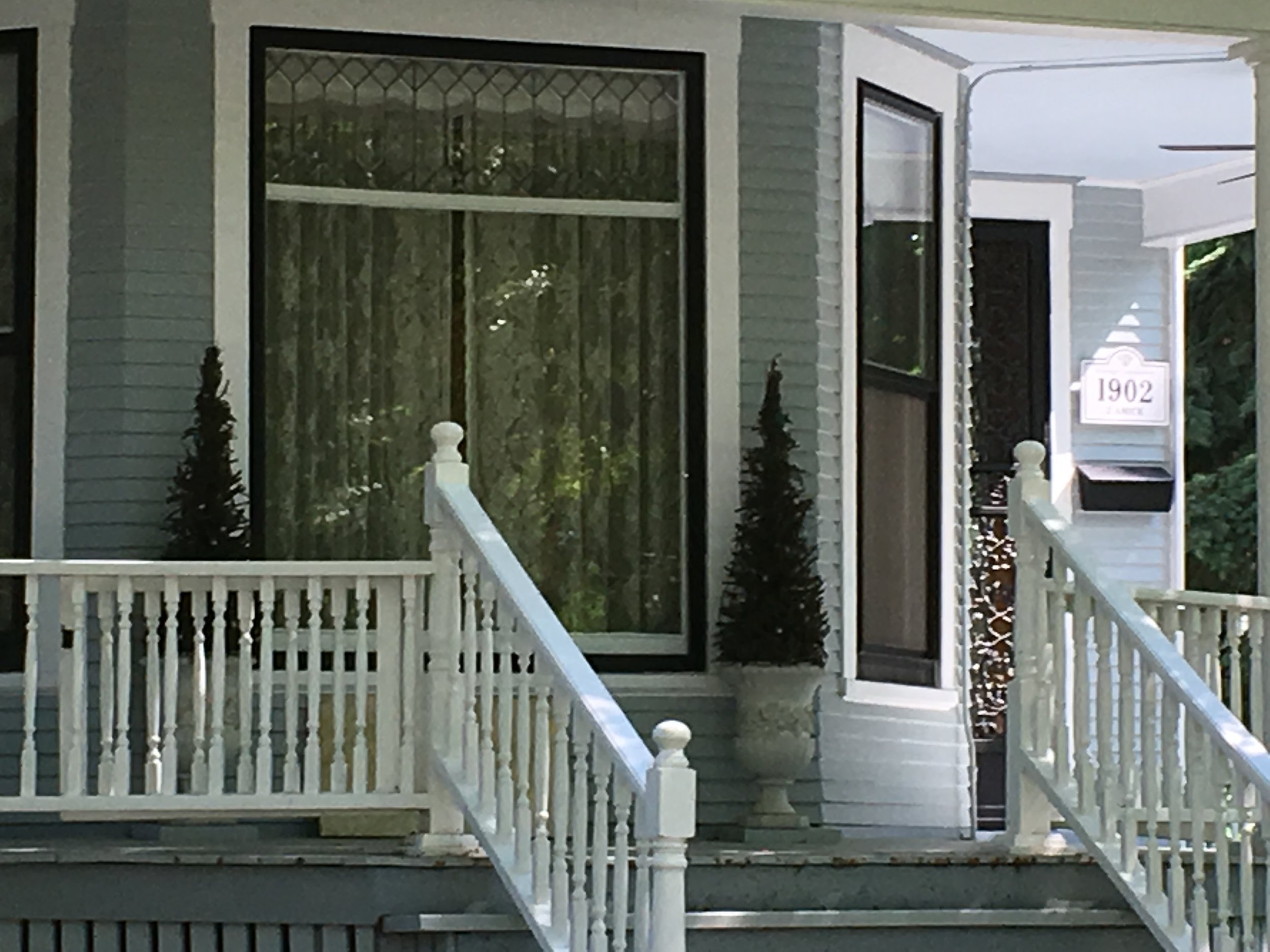774 MILL STREET
HISTORIC SIGNIFICANCE
In November of 1902, Joseph Amick purchased lots 3 and 4 on Mill Street near the corner of Hamilton and Mill. He quickly built a property there, and began renting it out. Amick was a charter member of the Highland Avenue Church of the Brethren and was elected its Elder. He was also the business manager of the Brethren Publishing House. The publishing house moved to Elgin in 1899 when the Church decided to move a new parish to town. The presence of the Church of the Brethren on Highland Avenue resulted in a number of new homes in the area bought by new parishioners. Amick often facilities these moves, first buying a house and then selling it to the new Elginites upon their arrivals.
In 1904, Amick sold the lots and the house to William and Bertha Grelck for $4500, noting the new popularity of this Elgin neighborhood. William worked as the general manager of the Elgin Milk and Cream Company with an office in the YMCA building on East Chicago Street. For the next ten years, he tried to buy up surrounding lots with money borrowed from family and the First National Bank. But by 1914, First National Bank took back the house and both lots 3 and 4.
The bank quickly sold 774 Mill to Hugh and Jane Stewart, Canadian immigrants. Hugh worked as a miller at Waverly Mills, and after retiring there, he took a job at a local gas station. When he died in 1928, Jane continued to stay at 774 until her own passing in 1943.
After Jane Stewart passed away, the house came into the possession of Desmond Bittinger, who held the office of moderator at the Church of the Brethren. He wrote for the church’s publications such as The Golden Jubilee and sat as editor for Gospel Messenger. In 1950, Bittinger sold 774 to Ferdiand Borm and his wife Vera. Borm was a German immigrant, as so many other Elginities of the time. He owned Borm Manufacturing Company and had a claim to fame in his patent for “Golfer’s Pal,” a device to help keep track of a golfer’s score on their wrist. Borm passed away in 1955 and the house left his family’s possession.
ARCHITECTURAL SIGNIFICANCE
774 Mill Street is an example of the Shingle architectural style. The Shingle Style contrasts its Queen Anne counterpart because of its lack of decorative details. The Shingle style was influenced by the Queen Anne style with its use of wide porches, use of shingles and asymmetry; it also takes some features from the Colonial Revival style seen here in the palladian windows and front porch columns.
The main features of the Shingle style seen here on 774 Mill Street are the use of shingles as wall cladding, no corner boards to break the flow of the wall cladding, and its steeply pitched roof with intersecting cross-gables. Bay windows, palladian windows, and strips of three or more windows are common, usually with simple window surrounds. Of the five Shingle subtypes, the gambrel roof is most common and seen here on 774 Mill.
TIMELINE OF PREVIOUS OWNERS
Sources: 2004 Heritage Plaque Application; Audio: TextAloud





